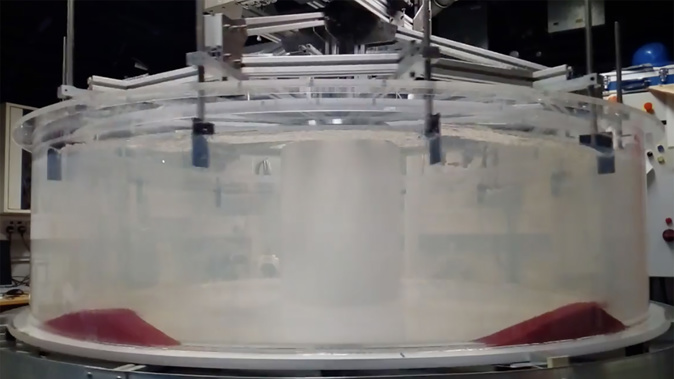
Sand dunes are inanimate objects, so they don't think or feel, but they can communicate with their neighbours and let them know they need space, according to research published by scientists at Cambridge University.
The scientists made the discovery after putting two identical piles of sand in a special, 6.5 feet (2 meters) across rotating tank that generated enough water flow to move the particles.
Sand dunes are known to move around, or migrate, in rivers, oceans and deserts and smaller dunes generally move faster than larger ones, Karol Bacik, a PhD candidate in Cambridge's Department of Applied Mathematics and Theoretical Physics told CNN. He's the first author on the paper that has been reported in the journal Physical Review Letters.
Bacik said he thought the two piles would move at the same speed since they were the same height and volume.
But that's not what happened.
"There were all the reasons to suspect that they will move at the same rate, but it turns out that they move at different rates," Bacik said. "They would move away from each other, as though they didn't like each other."
The dunes kept moving away from each other until they were at the opposite ends of the round tank.
Sand dunes tend to occur in vast dune fields or corridors, so understanding how they interact will help scientists understand the long term evolution of landscapes, Bacik said.
He said this phenomenon has been seen in satellite images of deserts, but scientists didn't know what caused the dunes to repel each other.
They found that when the flow of water hits the first dune it generates turbulent swirls and curls that are similar to the wake of a boat. That turbulence pushes against the second dune as it flows downstream.
"So the upstream dune is actually generating a wake that speeds up the downstream dune to give it an extra kick," said senior research fellow Nathalie Vriend with the BP Institute for Multiphase Flow, who led the research.
The size of the wake varies, depending on the size of the dune, Vriend said. They're currently looking at how two different sized dunes behave in the test.
It takes about an hour to run the experiments in the lab, which Vriend says lets them make observations that would take decades in nature.
"We uncovered some beautiful physics that was previously unknown on Dune interactions," Vriend said. "It's sometimes a little bit strange to think that these inanimate objects, which aren't humans, transmit information back and forth, which I find fascinating."
The-CNN-Wire
™ & © 2020 Cable News Network, Inc., a WarnerMedia Company. All rights reserved.
Take your Radio, Podcasts and Music with you









